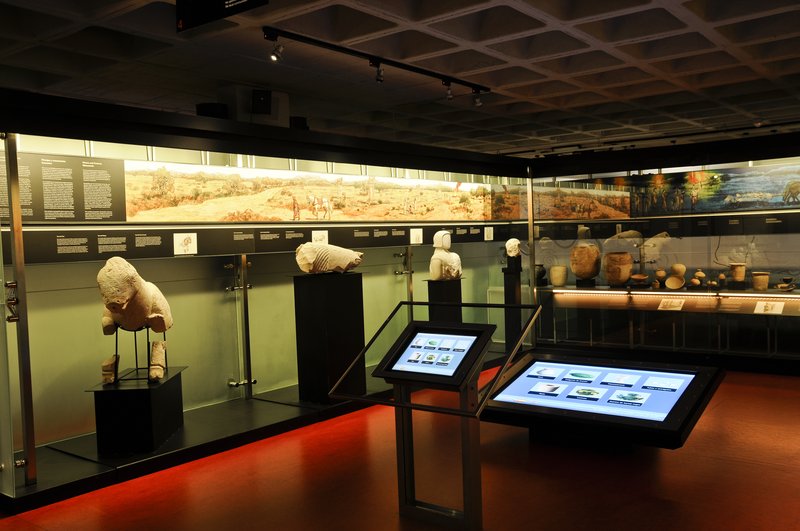Cultural Tourism
The land which was the birthplace of the Lady of Elche bust, which witnessed in fascination the emergence of that medieval wonder known as the Misteri, the Mystery Play. The land where hundreds of thousands of palm trees have been sown, cultivated and nurtured, and under whose gentle shadow the daily lives of the citizens run their course. The land which has been deemed worthy of two declarations as a Unesco World Heritage Site, must be, by rights, a land of nuances and contrasts.
A peaceful walk through the streets and squares of the historic centre of Elche allows one to discover a combination of grand, monumental buildings (the Basilica of Santa Maria, the Alcazar de la Señoria, the Calahorra Tower, the Convent of la Merced, the Town Hall, among others), testimony to a rich past, standing alongside the newer constructions of young and dynamic city. This great architectural wealth is complemented by a network of museums whose contents are of undeniable interest to the visitor.
The strategic location of the original site of the city at La Alcudia, two kilometres south of the current city, marked out its early historical. Through it passed several civilizations, whose legacy lives on at the museum and archaeological site. The remains left behind by Neolithic culture demonstrate the presence of human civilisation dating from five thousand years before our the current era.
Iberians, Romans and Arabs
The Iberian and Roman periods (V century B.C to II century A.D) were the most splendid of the ancient city, with the construction of magnificent buildings, temples and a profusion of sculptures, such as the Lady of Elche bust. It was, in all likelihood, the cultural and religious focal point for the surrounding lands, and in turn it received Mediterranean influence through the nearby port, Portus Illicitanus, the current town of Santa Pola. During its time as a Roman colony, Illici, as it was known, came to issue its own currency.
After several French, German and Byzantine invasions, the city entered a period of domination by the Hispano-Roman peoples of the Visigoth culture, thus acquiring a new importance. It came to have its own Episcopate, with Bishops forming several Councils and an important Basilica, whose remains can be visited at La Alcudia.
Between the IX and X centuries, Arabs originating from Egypt founded a new town called Ils, next to a stretch of the river two kilometres north of the previous site. They protected it with city walls, of which the main Tower, La Calahorra, still remains to this day. Trade and financial activity went through a phase of splendour, thanks to developments in agriculture. An example of this social well-being are the XII century Arab Baths in the centre of the city. The Archaeological and History Museum of Elche (MAHE) invites the visitor to see a comprehensive overview of the upheavals of the city´s past, both at its former site as well as at its current one, which is brought alive with interactive displays.











